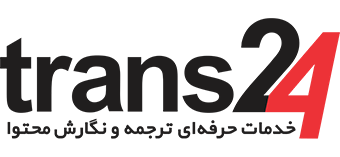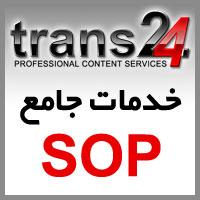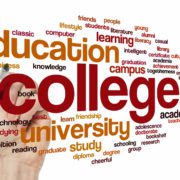نمونه SOP تحلیل نشده برای اخذ پذیرش از دانشگاه کالیفرنیا آمریکا
[box style=”1″]
سلب مسئولیت
نمونه های بیانیه هدف (SOP) موجود در این پایگاه، متون واقعی هستند که توسط متقاضیان پذیرش در دانشگاه های آمریکایی نوشته و ارسال شده اند. این متون توسط مرکز ترجمه و نگارش محتوای Tran24 نوشته نشده اند. این متون به غیر از اسامی و مشخصات نگارندگان آنها، دستخوش هیچ تغییر دیگری نشده اند. مرکز ترجمه و نگارش محتوای Trans24 هیچگونه ادعایی مبنی بر بی نقص بودن این متون SOP ندارد، اما به این دلیل در پایگاه اطلاع رسانی ما قرار داده شده اند که بر این باوریم که حاوی نکاتی هستند که متقاضیان به هنگام نگارش بیانیه هدف (SOP) باید مورد توجه ویژه قرار دهند. جنبه های متعددی نیز وجود دارد که متقاضیان باید از آنها بر حذر باشند، که در بیانیه هدف های (SOP) نقد شده مورد اشاره قرار گرفته اند.
به کاربران و مخاطبین سایت Trans24 پیشنهاد می کنیم که به هنگام استفاده از این نمونه ها و نقد آنها، احتیاط نمایند. همچنین، مصرانه و مجدانه اخطار می نمائیم که متقاضیان به هیچ وجه از متون موجود کپی برداری ننمایند، چراکه سرویس ها و نرم افزارهای متعددی در دسترس دانشگاه ها و کمیته های پذیرش وجود دارد که می تواند متون ارسالی توسط متقاضیان را از حیث Plagiarism و کپی برداری مورد بررسی قرار دهد. اما در صورتیکه که تصمیم شما بر آن باشد که از متون حاضر کپی برداری نموده و در بیانیه هدف (SOP) خود استفاده نمائید، هرگونه مسئولیت و پیامد ناشی از این عمل بر عهده شخص شما خواهد بود.
بدینوسیله یادآور می شویم که متون SOP حاضر برای یاری رسانی جهت نگارش بهتر SOP فراهم گردیده و به هیچ وجه میانبر برای رسیدن به SOP متمایز و منحصر به فرد شما به حساب نمی آید. برای نگارش SOP منحصر به فرد و متامیز خود می توانید به صفحه نگارش انگیزه نامه مراجعه نمائید
در صورت وجود هرگونه ابهام درباره این متن سلب مسئولیت، لطفاً ابتدا به صفحه “سؤالات متداول“، و در صورت عدم موفقیت در یافتن جواب، با ما تماس حاصل فرمائید. بدیهی است سؤالات ارسالی کاربران که قبلاً در صفحه یاد شده پاسخ داده شده است، بی پاسخ خواهد ماند.
[/box]
[hr]
نمونه بیانیه هدف (SOP) تحلیل نشده
Human Computer Interface (Computer Science)
I decided to attend the University of California at Santa Barbara(UCSB) as a Math - Computer Science (CS) major with the intention of working in the information technology industry one day. During my first year of college, I heard about courses offered in Human Computer Interaction (HCI). Further conversations with a student specializing in HCI enlightened me on its applications in the everyday world. I realized that knowledge of the cognitive aspects of organization and representation of information with a strong CS background could help me create efficient information architectures and effective user interactive designs. I could even draw upon my course work and experiences in extracurricular activities in so far as they relate to human interaction with technology to help overcome communication barriers. For example, a drama performance with its power of presentation, the silent display of paintings and the world of the blind and handicapped all present subtle insights to effective communication. Hence, along with my major field of study, I pursued cognitive science to achieve my goal of being able to work with people and computers simultaneously.
Throughout my undergraduate career, I have engaged myself in activities that merge the components of art, human behavior and technology to enable better learning methods amongst youth and I want to continue to do so at a professional level. Graduate studies in HCI will enable me to develop the skills to create software designs that I can subsequently apply in an academic environment to promote e-learning techniques. Since I lived in India for ten years and am aware of the large number of disadvantaged, poor and handicapped people, I would eventually like to implement such methods in the underserved segments of an Indian society. I am attracted by the vast research facilities at UG that can be a major resource in developing effective interactive computer interfaces. Research projects on learning technologies like the Center for Highly Interactive Computing in Education (Hi-Ce) is of particular interest to me since it deals with the academic development in youth by blending the social sciences with technical components.
In order to broaden my understanding of the role of cognition in everyday computer applications, I have taken several courses at UCSB in the specific area of cognitive science. My coursework has also investigated the cognitive basis of successful multimedia designs while looking at its impact on the efficiency and effectiveness of information systems. In addition to these challenging courses, I have gained extensive knowledge about interactive designs and computer mediated communication through computer science courses, research projects, industrial experience and organizational involvement.
I have always liked teaching, and as I explored HCI related projects, I got an opportunity to work with a distance education program at UCSB. We used interactive mathematics software to tutor students from underserved communities via the internet. Communication problems amongst the tutors grew when the team of five expanded fivefold in the next year. To resolve the issue, I initiated a file based information management system in which the tutors entered detailed reports of tutoring sessions they conducted with the students. This system eliminated any unnecessary repetition of material by another tutor during a follow-up session, thus improving the efficiency of the program. This experience was very exhilarating as it involved working in a team that succeeded in starting a new project to contribute to the needs of the society. I gained an extensive insight into how students from similar backgrounds respond differently to the same information presented to them. Having interacted with these children for almost two years, I learned more about their family environment and the hardships they undergo at home. I realized that due to the lack of encouragement from their family, disinterest in school and education, we were their only source of motivation to excel academically. Thus, we constantly reminded them of the importance of higher education and reassured them that just like us, they are also capable of obtaining a college degree. The fascination of learning through computers as opposed to classroom teaching and being able to learn at their own pace also inspired the students to make an effort to achieve better scores. 80% of the students tutored within those two years graduated from elementary algebra and were placed in advanced level math classes the following year.
During my second year at UCSB, I joined Worldguide, WashSpace at the XYZ Institute of Oceanography as a summer intern. I worked with the Worldguide team in creating internet-based courses on Earth and Environmental science for K-12 students. I had the URL for Worldguide added as a useful link to the official websites of 27 state boards of K-12 education across the US as well as an Australian board of education. The most difficult part of this project was organizing all the information we had gathered in a clear and concise way to enhance learning. I found it particularly challenging to design an attractive layout of the material that would appeal to K-12 children. However, as a team we were able to coordinate our efforts and achieve our goal.
Currently I am developing an e-learning course on Web Programming Languages with a team of five students from the Cognitive Science department at UCSB. I have succeeded in filtering all the available information on learning JavaScript and rewriting it into five hours worth of lecture material. This task required evaluating and summarizing several books and online resources while ensuring all necessary and sufficient information to teach JavaScript was included. My next challenge was to create interactive exercises based on the course content to promote active learning. I have incorporated popular themes like the TV sitcom Friends and Starbucks coffee into the lecture material and exercises. For example, after discussing data types and concatenation of variables in the lecture, I introduce an interactive exercise that ties both of the themes together. I ask the students to help Rachel make a vanilla latte for Joey by looking at a Starbucks menu and displaying the ingredients as a concatenation of string variables. I believe this is a good way to hold the students attention and interest since these are things they enjoy and can relate to. Through this experience, I have gained a better understanding of the cognitive aspects of user-centered design.
While I lived in India, I was an active member of the Red Cross Committee. Through this organization, I spent a year with the poor people in slums, playing with the children and helping out in the one-room school. Additionally, I had the opportunity of reading to students at the school for blind children for three years. While these activities were both educational and enjoyable, they also provided me with a unique experience in the basics of communication against the backdrop of emotional and physical handicap.
Additionally, I have been able to explore a variety of marketing techniques as well as learn more about digital aesthetics through the UCSB Advertising club. Thus, I have had wonderful opportunities to combine my interests in working with people, computers and art. Although I have learned a lot from these experiences, I feel that with further training in HCI I could improve my performance in developing effective user interface designs and information architectures. I am convinced that the HCI program and research opportunities involving education and youth at SI will help me succeed in pursuing my ambition of advancing computer mediated education in an underserved community. I have had plenty of experience in creating and developing interactive e-learning courses for underprivileged students in particular, that I could share with research projects that address educational problems faced in rural environments. Thus, the combination of my interest in working with people and technology to help the academic development in youth from underserved communities along with my background makes me an ideal candidate for any such research opportunities with the SI department at UG.







دیدگاه خود را ثبت کنید
تمایل دارید در گفتگوها شرکت کنید؟در گفتگو ها شرکت کنید.